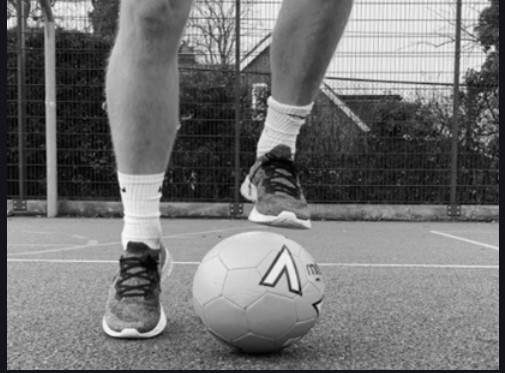What is Communication, in Soccer?
Communicating in Soccer
Tips for Player Communication in Soccer
Call for the ball when you’re open
- Call for the ball every time you get open.
- Do not call for the ball when you are covered. Instead focus on getting open or blocking another player.
Call loudly for the ball
- You can’t be “too loud.”
Use Your Hands
- Holding up your arms while shouting for the ball is a good way to get a teammates attention. Do this when you are wide open.
- More advanced players: Use your hands to indicate where you want your teammate to pass the ball. For example, putting your right arm out while moving in that direction makes it easier for teammates to understand that you want to receive the ball on that side.
Communication Game 1
Communication Game 1
 Yell It Loud!
Yell It Loud!
This exercise will allow players to practice communicating, kicking and receiving the ball.
1) Put players into pairs standing about 10-15 feet apart across from each other. (if you have an uneven amount of kids, you might need recruit a parent to step in or you might need to).
2) 1 person will be the kicker and 1 will be the receiver (alternating). The receiver will practice waving their arms and yelling “I’m open”.
3) Encourage the children to be loud. Remind them that their parents usual ask them to quiet down, but now is when you can be loud! The kicker should not kick the ball until the receiver yells “I’m open”.
4) Have them go back and forth several times.
Variation: Break them into groups of 4. One person will be the kicker. Two will be the receivers and one will be trying to block the 2 receivers. Ask one of the receivers to get open and yell I’m open. The blocker will keep trying to make it hard for the kicker to find someone to kick to.
For the Coach: Don’t be afraid to get out there and encourage the kids to be loud. Remind them that the other players can’t see everything – so you need to sometimes yell so they know you’re open. Of course some kids will be more shy than others. If they are having trouble yelling “I’m Open”, maybe stand right next to them and yell it along with them.
Communication Game 2
Communication Game 2
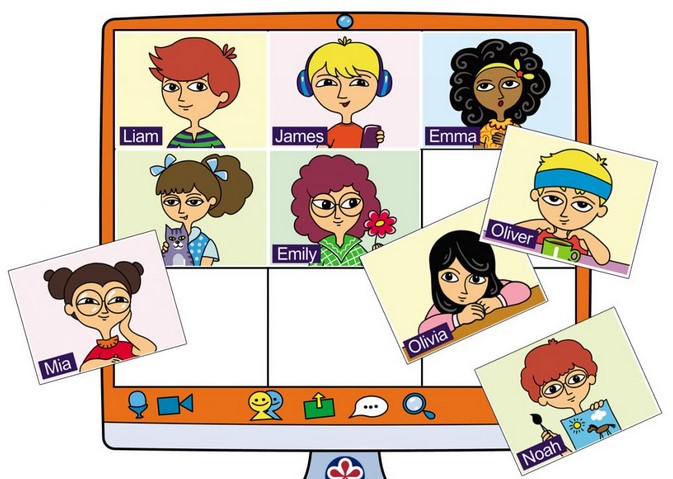 Match Game
Match Game
This exercise will allow players to practice communicating, running fast, kicking and receiving the ball.
1) Place 1 soccer ball on the field for each kid (randomly placed on field).
2) All kids should stand near coach at the start of the game.
3) Coach announces that they should kick a ball to a player that has “blonde hair”. The kids will run as fast as they can to any ball on the field and find a blonde haired player to kick it to (there may be more than 1 blonde haired child). If someone else has that ball, they need to run and find a different one.
4) If a child is blonde haired player, they can yell I’m open to help the others find the blonde haired player.
5) Continue by picking other traits (glasses, a certain color shoe, pony tail, braids, a specific players name, etc)
For the Coach: If they are having troubles finding the player that matches your description… go near the “blonde haired” player and help them yell, “I’m open”.
Communication Game 3
Communication Game 3
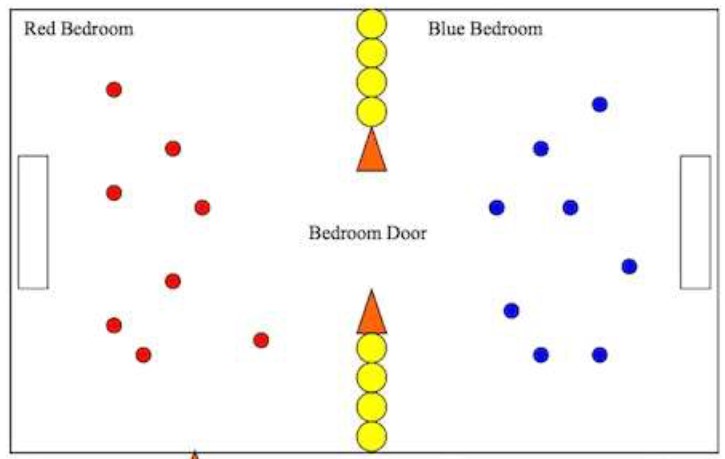 Keep Your Bedroom Tidy
Keep Your Bedroom Tidy
This exercise will allow players to practice communicating, acting fast and kicking the ball.
1) Divide players into 2 teams. They shoul each have at least 4 balls in each “bedroom” – preferably more if there are some available.
2) When you yell “Clean your Room” all the kids will run to a ball and try to kick it through the door to the other bedroom – note however, kids must stay in their own room.
3) The kids should keep trying to “clean the room” as players from the other team continue to kick balls into the bedroom.
4) The first bedroom to have no balls in it, wins.
Variation: Add more than 4 balls to a bedroom.
For the Coach: Encourage the kids to talk and pass the ball to each other – it will help them get the balls out of their room more quickly.
Why is Receiving Important?
Why is Receiving Important
One's ability to receive a soccer ball determines their effectiveness as a player.
If they have a poor first touch they will lose the ball before they can even do anything with it.
If they have a great first touch they have more time to look for a pass, dribble, and shoot. Soccer just becomes easier.
Receiving Game 1
Receiving Game 1
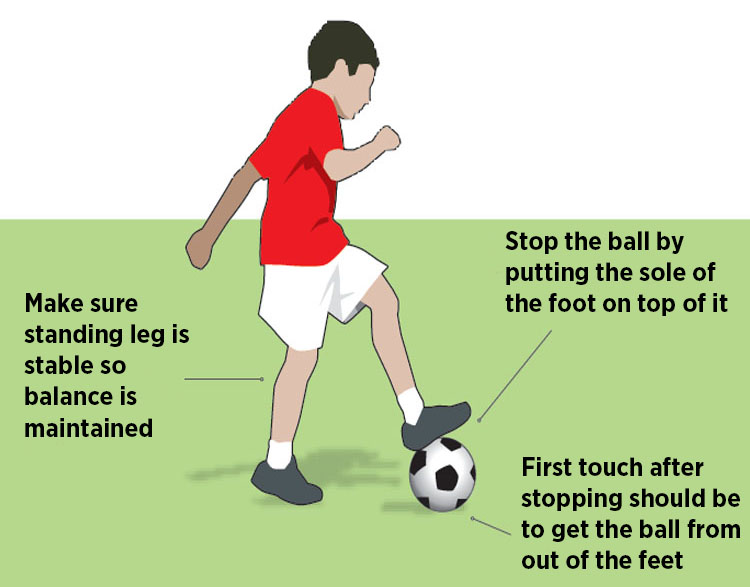 Stop!
Stop!
This exercise will allow players to practice kicking and receiving the ball
1) Divide players into pairs. 1 player will kick and the other will receive (alternating)
2) Coach announces how Player 2 will receive ball. Player 1 kicks the ball to Player 2.
a. Receive the ball by Stopping it with your foot
b. Receive the ball by Stopping it with your foot and then sitting on the ball
c. Receive the ball by immediately kicking it back to Player 1
d. Receive the ball, turn and dribble it to the goal.
e. Etc.
Variation: Come up with your own ideas. They don’t need to necessarily be official soccer moves – although try to not involve hands in stopping the ball – as you don’t want them to get in the habit of using their hands (which is illegal in a game).
For the Coach: Remember the number of toe touches is important during practice… so feel free to pratice this one for a little longer than normal.
Receiving Game 2
Receiving Game 3
Receiving Game 3
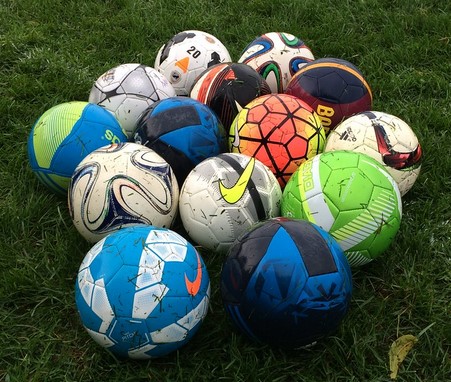 Hot Lava
Hot Lava
This exercise will allow players to practice kicking and receiving the ball
1) Coach starts with all the balls. Spread out the kids in a semicircle.
2) Begin kicking a ball to each of the kids. They should in turn “quickly” kick it back to you. They don’t want to get burned by the hot lava.
3) They should try to be accurate, using the side of their foot.
4) Their goal is to kick it back to you before you run out of balls. Your goal is to not have any soccer balls left.
Variation: Divide the kids into groups of 4 and have the kids do the same activity, just with each other.
For the Coach: Work on using the side of their foot and also keeping their head up.

